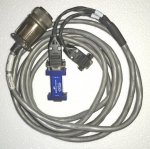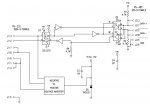Starting dedicated thread.
I would like to discuss and share information on how to get the status data from the AMMPS generators through either RS485 ( Remote port) or tapping into the J1939 Canbus pins.
I believe the RS 485 coming from the Remote port is Modbus RTU, but I am unable to scan it with ModScan 64.
Has anyone been successful in getting generator data with a different application other then the Inpower software?
I would like to discuss and share information on how to get the status data from the AMMPS generators through either RS485 ( Remote port) or tapping into the J1939 Canbus pins.
I believe the RS 485 coming from the Remote port is Modbus RTU, but I am unable to scan it with ModScan 64.
Has anyone been successful in getting generator data with a different application other then the Inpower software?







